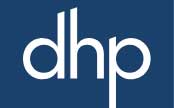Increasingly businesses are realising that optimising their back office operations is crucial to success. Workforce management software has become integral to achieving back office optimisation, and there are now numerous software solutions that manage workflow and drive performance improvement. With multiple software providers on the market, it can be challenging to know which vendor offers the best fit for your operation. There are a number of essential features that software needs to manage workflow and achieve true performance improvements which are outlined below.
Productivity, skills and costs
A primary function of all optimisation and management software is the analysis of productivity, staff skills and unit costs. If your software can’t do this, then it’s missing a critical element for performance improvement. Understanding staff skill levels is essential to performance improvement. There are always skills deficiencies in any operation. It’s important they are quickly identified, and the correct training actioned. Skills deficiencies are a cause of operational imbalance creating bottlenecks, backlogs and quality problems that cause service delivery issues. More advanced software solutions have staff training and competence functions built in. A feature that can be overlooked but pays a big dividend when there are compliance changes or skills deficiencies. It’s especially valuable for larger operations as hundreds, or even thousands of operatives can be trained and tested simultaneously quickly and efficiently upskilling.
Productivity is never an accident. It is always the result of a commitment to excellence, intelligent planning and focussed effort.

Workflow measurement
A software solution needs to be able to give managers a clear picture of current workload and provide a framework to manage existing and incoming work. It must be able to tell them how much work there is in terms of volume and hours and how many staff are required to complete any work, at any particular point in time. This is not workflow and image replacement. Your software solution needs to be able to integrate with existing workflow image systems and must be able to be able to measure out of all of the hard coded workflow information.
Work tracking
Many operations still administer core work, key customer and financial data from a collection of spreadsheets. This can lead to a variety of issues and problems as spreadsheets are not designed for operation workflow management and tracking. One of the big problems with spreadsheets is they are one dimensional – designed to capture volumes – they don’t have the industry best practice calculations so it’s impossible to benchmark your operation.
Reports are often manually constructed and not driven from a single source data. Critical frameworks like Quality and Forecasting which need consistency and robustness are often done in silo and do not holistically link up.
Spreadsheets make for a very disjointed operation. Data becomes fragmented, and aggregation of data sourced from multiple sites frequently leads to errors and inaccuracies. Aggregation of data also takes time creating lag in reports. This means there’s no real-time data, and only a limited ability to provide accurate forecasts.
With a lack of industry best practice calculations productivity is often reported at 100% but based on incorrect definitions and the wrong calculations – it’s usually significantly less. And it’s very difficult to manage effectively when you’re living in the past and looking backwards rather than forwards this is further compounded by a lack of confidence in the management information that can be generated from the spreadsheets.
Workforce management software has be able to track all the work in an operation from receipt to completion. This critical feature enables managers to understand bottlenecks and skills deficiencies to improve both internal performance and customer experience. Some software solutions display this data in colour coded dashboards enabling managers to quickly see the issues in their team or the entire operation. They can then drill down into a problem task and track it back to understand its root cause and fix it.
Management success always leaves evidence of effort, follow – through, productivity and achievement.


Scheduling and planning
Work scheduling and planning is an essential feature that enables managers to understand if their current resources can meet work demand. A feature that supports this and is becoming more common is automated work allocation. However to do this effectively, software must be able to match a task to a member of staff with the correct skills, who has availability to complete the work and is in the right location. Managers are the key to ensuring automation is effective as they set the plans and understand the team and the customer requirements.
It’s important to dig into how software supports your managers to schedule and plan efficiently. Find out how software saves your manager’s time and how it will enable them to focus on improving personnel performance. Some software has the opposite effect constraining and disempowering managers to the confines of the system. Effective software drives action and staff interaction to improve performance.
Quality
It’s vital to comprehend how a software system maintains and manages quality. More advanced software solutions have quality features that save enormous amounts of time on training and compliance through automated reporting and testing. Make sure you spend time researching exactly how a software solution handles quality. If you’re looking for that extra competitive advantage then maintaining quality is essential.
Forecasting
Forecasting is incredibly powerful, but many software solutions do not include it as a feature. It is critical to driving an operation forward to achieving its objectives. If you’re not forecasting in your operation then having software that can provide you with a structured forecasting process will be of great benefit. It will enable you to gain clarity on your future position and create practical plans. If you are already forecasting in your operation understand exactly how software will support your managers existing forecasting activity.
Analysis and reporting
It’s important to understand what your software can analyse and the reports it can generate.Throughputs, backlogs, service standard achievement and quality are crucial to getting a clear picture of how an operation is performing and areas that can be improved. You need to make sure that the reports generated are easily digestible and actionable, so your managers can use them as a tool to drive positive change.
Choosing the right solution for your operation
Every operation is unique and before implementing any software you need to have a clear picture of where your operation is and where it has the potential to be. An operational diagnostic enables you to get an outside perspective uncovering the flaws in your operation typically hidden from an internal view revealing the true capacity you have for growth. With hard facts you know what actions to take and how software will best support you to achieve a strong, efficient and agile operation.



